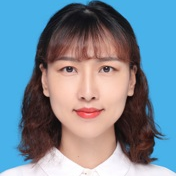Image/Signal Processing and Machine Vision in Sensing Applications
A special issue of Sensors (ISSN 1424-8220). This special issue belongs to the section "Sensing and Imaging".
Deadline for manuscript submissions: closed (10 May 2023) | Viewed by 23136
Special Issue Editors
Interests: machine vision; pattern recognition; image processing
Special Issues, Collections and Topics in MDPI journals
Interests: pattern recognition systems
Interests: machine vision for inspection and measurement in industrial applications
Interests: integrated design; machine vision; robotics and intelligent manufacturing
Special Issues, Collections and Topics in MDPI journals
Special Issue Information
Dear Colleagues,
Machine vision encompasses all industrial and non-industrial applications in which a combination of hardware and software provides operational guidance to devices in the execution of their functions based on the capture and processing of images. Machine vision and image processing technologies are widely employed in sensor science and technology.
This Special Issue intends to provide a timely opportunity for scientists, researchers, as well as engineers to discuss and summarize the latest signal/image processing and machine vision methods in sensing applications. We invite papers that include but are not exclusive to the following topics: artificial intelligence; pattern recognition/analysis technologies in human analysis; behavior understanding and image processing in chemical, biological and physical sensors; measurement compensation and calibration; sensor applications in robotics and intelligent systems; non-destructive testing and evaluation; precision measurements and metrology; and remote sensing methods. Both theoretical and experimental studies are welcome, are comprehensive review and survey papers.
Dr. Xinyue Zhao
Dr. Dong Liang
Dr. Guoliang Lu
Prof. Dr. Long Chen
Guest Editors
Manuscript Submission Information
Manuscripts should be submitted online at www.mdpi.com by registering and logging in to this website. Once you are registered, click here to go to the submission form. Manuscripts can be submitted until the deadline. All submissions that pass pre-check are peer-reviewed. Accepted papers will be published continuously in the journal (as soon as accepted) and will be listed together on the special issue website. Research articles, review articles as well as short communications are invited. For planned papers, a title and short abstract (about 100 words) can be sent to the Editorial Office for announcement on this website.
Submitted manuscripts should not have been published previously, nor be under consideration for publication elsewhere (except conference proceedings papers). All manuscripts are thoroughly refereed through a single-blind peer-review process. A guide for authors and other relevant information for submission of manuscripts is available on the Instructions for Authors page. Sensors is an international peer-reviewed open access semimonthly journal published by MDPI.
Please visit the Instructions for Authors page before submitting a manuscript. The Article Processing Charge (APC) for publication in this open access journal is 2600 CHF (Swiss Francs). Submitted papers should be well formatted and use good English. Authors may use MDPI's English editing service prior to publication or during author revisions.
Keywords
- image and signal processing
- machine vision
- sensor science and technology
- image processing in chemical, biological and physical sensors
- remote sensing
- sensor-based industrial inspection









